Rylie Fischer
Class of 2026
Major in Applied Mathematics
Minor in Physics, Actuarial Mathematics
When I came to SUNY Poly, I was unsure of the academic path that would be best for me. I was undeclared and leaning towards a biology major. My first two semesters (Fall 2022/Spring 2023), I took courses aligned with that track, like Chemistry, and Biology. It was during this spring semester, while taking a biology course, that I had realized that I wasn’t enjoying the direction I was headed. At the same time, I discovered how much I truly enjoyed mathematics. I declared Applied Mathematics as my major and, thanks to the physics courses I had already taken, I also realized how fascinating physics was. Soon after, I declared a minor in physics.
Although I had found a passion for physics, I needed to focus on requirements for my new major and had to step away from physics for a semester. That break made returning to Intermediate Mechanics the following spring more challenging, but it also reminded me how rewarding the subject is. Physics courses demand focus and effort, but I was genuinely excited to attend class and keep learning.
The coursework in the physics minor is not the only thing that makes it special, it is the department itself. The physics program at SUNY Poly is small, and throughout my courses, I was lucky enough to have the same two professors. This gave me the opportunity to build meaningful relationships with them. Also being a student-athlete with a busy schedule, the physics department was especially understanding and did everything they could to help me succeed.
In taking the physics courses required for the minor, I was able to study a wide range of topics, including Modern Physics, Intermediate Mechanics, Waves and Optics, Electromagnetism, and Computational Physics. Each course was distinct, and together they broadened my knowledge in ways I hadn’t anticipated. None of them were easy, but the effort I put in was worth it.
Taking these courses not only expanded my academic knowledge but also gave me tremendous personal growth. At first, taking these courses challenged my confidence. I had never struggled to understand a course the same way. Many people assume that since I have a minor in physics, that it comes easy to me, but that could not be further from the truth. Physics is a very challenging subject; I will be the first to admit that. But I did not let this halt my passion and interest for it. I put in a lot of time to fully understand each one of the courses I took for this minor. Of all the courses I have taken at SUNY Poly so far, I can confidently say that I was most proud of my results in these physics courses. Looking back, I am grateful I chose this path.
Although my plans for the future are in actuarial mathematics and physics may not directly apply to my career, pursuing this minor has been incredibly valuable. It not only expanded my understanding of the world but also showed me what I am capable of achieving.
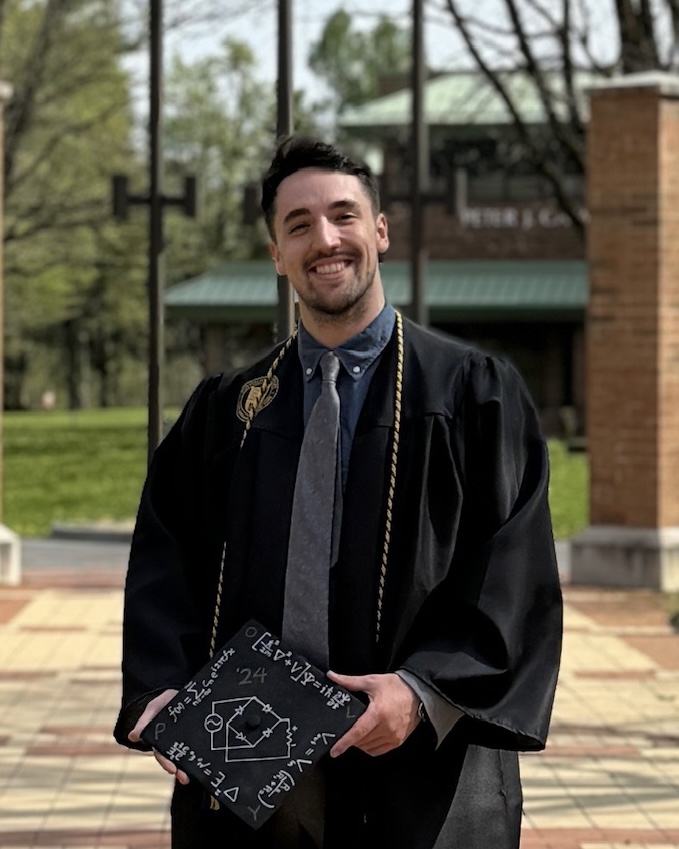
Thomas Morell
Class of 2024
Major in Electrical and Computer Engineering
Minor in Physics
In 2019 I started my bachelor’s degree in Electrical and Computer Engineering without much passion in the field, just knowing that it’s a valuable degree to have once I entered the workforce. In my sophomore year during Covid I became even more disenfranchised with my coursework and the online classes I had to take, including PHY 201. Once I returned to campus I began to genuinely consider changing majors and leaving the engineering track, until I retook PHY 201 in person. This class, under the instruction of Dr. Fariborz, completely changed my perspective on my engineering coursework and lit a passion in me not only for engineering, but for physics as well. Taking 202 the next semester only further solidified this conviction in me that I want to commit my academic career to the rigor of physics and how well it intertwined with my engineering coursework.
My new enthusiasm didn’t go unnoticed by Dr. Fariborz, who, along with my amazing 201 and 202 TA, Kais, heavily encouraged me to join the physics minor. Doing so was easily the best decision I made during my time at SUNY Poly. The advanced concepts that I learned in the upper level courses seamlessly connected to my electronics, signals, and electromagnetism engineering courses, and gifted me with a theoretical understanding beyond the scope of what my fellow ECE classmates were taught. The respect and maturity with which the faculty treated my fellow minor classmates and I granted me a confidence in academia that I never expected myself to have. Over three semesters I chose to TA four classes, a feat which wouldn’t have been possible if not for that confidence instilled in me by my superiors.
This newfound conviction in both my academic and personal capabilities helped me exponentially in my summer engineering internship, at which I was given an independence that others in my position weren’t equally granted. Along with this, I was able to apply my physics knowledge to my two senior projects, one of which I worked on with Anthony DeVasto, which were recognized and awarded at the Student and Faculty Project Showcase.
I couldn’t have accomplished any of this if it weren’t for the physics minor and the wonderful faculty that ran the program. The added difficulty in coursework is rewarding beyond expression, and leaves a lasting impression on the students that choose to participate in it. Every professor I studied under had an exceptional understanding of the concepts I was taught, and used every opportunity to include their personal expertise in the lectures they gave. I can’t thank each of them enough for the amazing work they do at SUNY Poly. To this day I recommend the minor to every student I possibly can in hopes they too get to share the great experience I had.
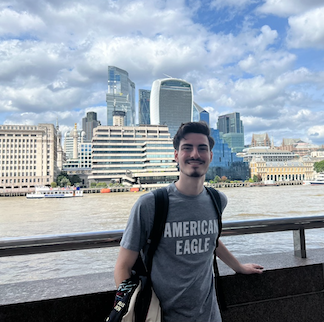
Anthony DeVasto
Class of 2024
Major in Applied Mathematics
Minor in Actuarial Mathematics, Physics, and Computer Science
I entered into SUNY Poly as an applied math major with minors in computer science and actuarial math. For my first year, I felt a lack of ambition for my studies. I did all my work and got good grades in my classes but lacked a feeling of passion for my work. I tried to carry on into my second year by simply accepting this and trying to move on from it. I would take calculus-based physics I (201) and II (202) in the fall and spring respectively.
My perspective of these classes while taking them was not the greatest; I thought of them as classes I just had to get through and took on a very relaxed mindset. This worked well enough for 201, but I found 202 required much more attention. I would try to participate and engage with my learning while also attending almost every recitation available to get the grades I wanted. The TA, Kais, was the first person who got me interested in the physics minor. He would always talk about it and say how even though it's a lot of work, it's worth it and a lot of fun. These constant recommendations from Kais and a presentation about future physics classes offered in the minor by Professor Fariborz cemented the idea for me.
I would unfortunately take a year-long break from physics, and while this is not something I recommend at all, I found an even greater desire to return to physics, a feeling that led me towards graduate studies. To strengthen my application, I quickly emailed Professor Fariborz over the summer to discuss being a TA and starting a research project.
Being a TA was a very enjoyable process for me. I found myself gaining a better understanding of the concepts as I tried to find the best ways to teach them, and loved seeing students improvement over time.
But while I enjoyed being a TA, it was realistically my experience in research which truly made me feel like I was on the right path. I worked on neutron star glitches with Professor Leung, where he created a project outline with specific tasks and suggested time frames, and weekly meetings to discuss my progress and any problems I needed help with. This project would become a point of passion for me. Professor Leung created a perfect environment where I had the opportunity to struggle with concepts but never had to stress as I knew he would provide just enough support to help me through. It was this environment that constantly pushed me to do better and to give the project everything I could. This devotion to a class was something I never had before, and I became very passionate and prideful about my work. Professor Leung would push me to present our work at the APS April meeting, an international astrophysics conference. This led me to take another semester to continue to work on the project with Professor Leung so we could refine and add more content, and fortunately, our abstract was accepted. From that point on, the project became my main focus; we would prepare not only the data and the slides but my presentation skills as well. I was then flown out to Sacramento, California to present through Professor Leung’s grant, something I am incredibly grateful for. The conference was an amazing experience, opening my mind to the research of professional physicists across the world, while also having the chance to explore Sacramento. Looking back on it, it is hard to believe just how much I was able to get out of this one decision to start a project.
Taking a physics minor at SUNY Poly is an amazing decision. The passionate teaching of every professor in the department gives life to the subjects they describe. I couldn't help but be excited about every topic when they have such a clear joy for teaching it. Not only are the classes enjoyable, but each professor cares deeply about the success of their students.
I can never recommend the physics minor enough; if you enjoyed 201 or 202 I can say with certainty that the physics minor is for you and that the entire department will work tirelessly to help you to succeed and meet whatever goals you may have. It is an incredible experience that can take you places you would have never thought possible.
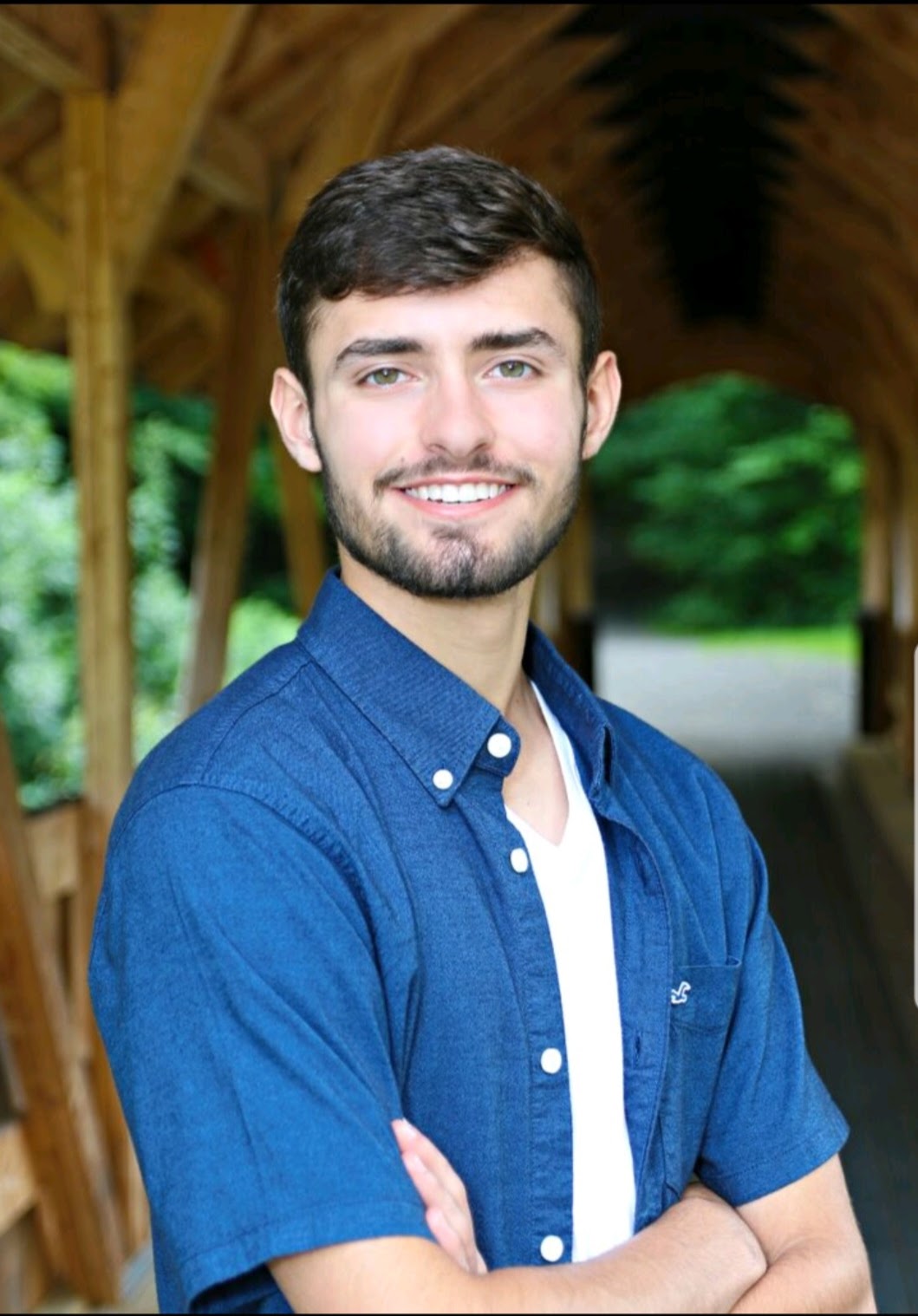
Zackary Amo
Class of 2023
Majors in Applied Mathematics and Computer Science
Minor in Physics
As an undergrad at SUNY Poly, I first pursued mathematics as I enjoyed solving complex problems. While completing my degree in Applied Math, I got introduced to the physics program through the required courses calculus-based Physics 1 and 2. Despite the time investment and the difficulty of these courses, I found another field of study that caught my interest. I was intrigued by how well mathematics conveyed the laws of physics.
After taking the required courses, I decided to pursue the physics minor offered at SUNY Poly. At the time, not knowing what I wanted to do as a career, I wanted to explore my interests and figure out what I could make the most fulfilling career out of. My study of physics was a segway into unlocking my intellectual potential that I did not know I had. I took courses in Intermediate Mechanics 1 and 2, Electromagnetism, Modern Physics and Quantum mechanics offered by the Physics Department. These classes take a lot of independent study and discipline to get through. Anyone who successfully gets through these courses, I believe, will obtain the critical thinking and learning skills to be successful in their career.
Not only were the courses comprehensive and challenging, they also brought the opportunity to deepen my understanding of topics of interest through projects. I worked on a project called “Gravitational field produced by an elliptical distribution of mass & the resulting dynamics” after completing Intermediate Mechanics 1. This project allowed me to explore the gravitational field of a more complex geometry than was covered in the course. It also exercised my mathematical modeling skills as it required extensive knowledge of the geometry of an ellipse and calculus.
As a physics minor, I also got the opportunity to TA for a calculus-based Physics 1 course. This was worthwhile as I got a deeper understanding of introductory classical mechanics, which was very helpful for the upper-division physics courses. More importantly, I improved my ability to explain complex concepts and problems to help my colleagues succeed. Overall, it was a fulfilling experience.
After graduating in the Spring semester of 2023, I will be pursuing a master’s degree in computer science part-time while working full-time as a Software Engineer at BAE Systems. Although I am not taking the traditional physics career path, I do not see myself straying far from my physics background. My goal is to make a career out of building and improving real-world artificial intelligence systems on the software side. Physics will play an essential role in these systems as real-world AI will have to interface with the physical world.
The physics program at SUNY Poly has played a significant role in my undergraduate education. I would recommend that upcoming engineers and mathematicians consider the physics minor offered here.
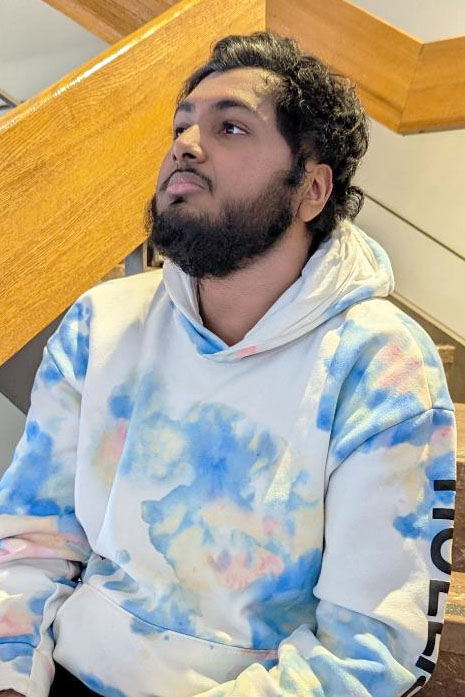
Kais Sheikh
Class of 2023
Computer Engineering Technology & Applied Mathematics
Minors in Computer Science, Nanotechnology, Physics
My time at SUNY Poly began in August 2018 solely as a Computer Engineering Technology major. Going through my early years of education and taking a summer course in Calculus 2, it was after this I picked up my second major in Applied Mathematics and I began to gain a greater appreciation and understanding of mathematics and higher education. In my sophomore year I took an introductory course in Algebra-Based Physics (PHY 101T) and this course was enlightening, but it wasn’t satisfying enough for me. It raised more questions than answers and the formulations just didn’t make sense to me. The following semester (Spring 2020), the COVID-19 pandemic hit, and everything ended up getting thrown into chaos, but I still persevered, and it was the following semester that I really began my journey into upper-level physics.
Following the effects of the pandemic in the next semester I began taking Calculus-Based Physics courses (PHY 201) and this is when things started to click for me. Being an Applied Mathematics major, most of the things I had learned up to this point, along with what I would soon go on to learn, started to fit together like pieces of a jigsaw puzzle. The explanations and derivations of physics are so logical and at times quite elegant, which is where my fascination came from. Thanks to that and the efforts of Dr. Fariborz who pushed me to challenge myself into taking more and more physics classes beyond the normal Calculus-Based Physics 1 & 2 courses. I got to take courses in: Intermediate Mechanics 1, Computational Methods of Classical Mechanics, Electromagnetism 1 & 2, and Modern Physics.
My learning was also tested through some of the associated projects which really pushed my learning capabilities and skills to their max. This also gave me crucial context to help me with my future coursework outside of physics, which I never would have obtained if it wasn’t for the help of Dr. Cobanera and Dr. Fariborz. On top of that I also got to work as a Teaching Assistant for the Physics Department, which helped to not only solidify my understanding of the subject but also allowed me to feel like I was impacting the next generations of students by helping them avoid the holes and difficulties I encountered when learning physics. Additionally, this role allowed me to help guide students, which excited me because the prospects of teaching always intrigued me.
Some work I did in my time studying was to understand how external interactions like gravitational force or gravitational potential was affected by geometry or understanding the solid-state physics of semiconductors and other electrical devices. There are no courses I would recommend more heavily than the upper-level physics courses offered at SUNY Poly. They really make you work for it and help you improve yourself in a way that is not so easy to come by.
Mars Lyukova
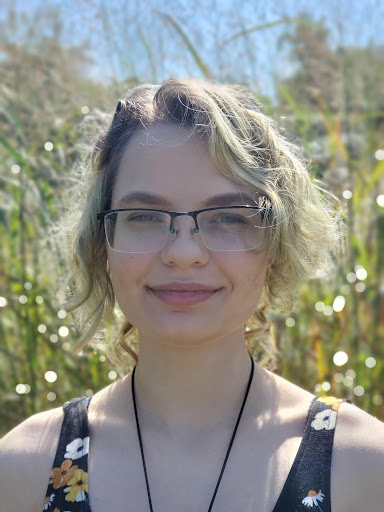
I want to express my gratitude for the SUNY Polytechnic Institute Physics Program. I didn’t start my undergraduate journey studying physics. Instead it was computer science, electrical engineering, and mathematics that took my interest. Only after taking a required physics course for my applied mathematics major, in which we learned about electromagnetism, did studying physics in-depth appear on my radar. I decided to continue pursuing physics afterwards, eventually obtaining the opportunity to work on publishable research on analyzing the structure of mesons through Monte Carlo methods. A reference for these publications is found at the end of this article. Alongside, the upper level physics courses required extensive projects. An example is learning to solve the amount of radiation produced from a non-trivial configuration of dipoles. I also had the opportunity to delve into studying Brownian motion as a project requirement. I graduated with a bachelors in Applied Mathematics, Computer Information Science, and a minor in Physics. I am thankful to have had the opportunity to study physics at SUNY Polytechnic as the courses were excellent in preparation for graduate studies, and the research opportunity was exceptional.
Currently I am a PhD student in physics at Stony Brook University working for the ATLAS Experiment at CERN. I research searching for dark matter through the process of Higgs Boson decays into mu mu b b. The experience in undergraduate physics research I had done in SUNY Polytechnic Institute directly applied since ATLAS research also uses a Monte Carlo method to simulate detector response to energetic particles. The considerable projects required for upper level physics courses gave a taste of research as well, so I did not feel as if I was suddenly dropped into the ocean as I transitioned into a graduate program.
At SUNY Polytechnic Institute, there were also plenty of opportunities to obtain a physics TA position. This helped grow my love for teaching, and provided experience for when I was required to TA as a physics graduate student. I hope in the future to become a professor teaching physics. I highly recommended courses taught by the physics department at SUNY Polytechnic Institute.
Publications:
A.H. Fariborz, M. Lyukova, “Spinless mesons and glueballs mixing patterns in SU(3) flavor limit,” Nuclear Physics A 1015, 122286 (2021).
A.H. Fariborz, R. Jora, M. Lyukova, “Quark and glue spectroscopy of scalars and pseudoscalars in SU(3) flavor limit,” International Journal of Modern Physics A 34, 1950034 (2019).
Colin Wadsworth
Class of 2022
Nanoscale Science
Physics minor
I was a nanoscale science major with a strong interest in material science and physics at SUNY Poly. I was excited to find that the school offered advanced physics courses in quantum mechanics, classical mechanics etc, which helped me in my research during undergraduate in ellipsometry and scatterometry under Dr. Alain Diebold. When I was taking the classes, I found my interest was in gaining a deep understanding of theory to better my research. Another part of the courses was the projects in upper division physics courses at SUNY Poly, where I was able to learn more about the subject and were excellent ways of showing what I have learned from the class as I was applying to graduate school.
After my undergraduate education, I am currently (January 2023) a graduate student at the University of Minnesota Chemical Engineering and Material Science department under Dr. David Flannigan studying ultra-fast tunneling electron microscopy. This allows us to study the dynamics of materials such as how crystal lattices respond to excitation and relation of charge carriers and the effects of interfacial forces. In my research, my physics classes at SUNY Poly helped give me lots of background knowledge to lean on and prepare me for how difficult the course work can be in grad school. The physics department at SUNY Poly and most importantly the professors in it helped me push myself to learn more and have been an inspiration for pursuing research. I would highly recommend the physics courses in the department and to reach out to the professors.
David Zemanek
Class of 2021
Electrical and Computer Engineering
Minors in Physics and Mathematics
Reflecting back on my undergraduate studies at SUNY Polytechnic Institute, I recall my involvement in the physics program which opened the door for me to acquire added value toward both my academic and professional careers. For one, the upper division physics coursework offered at SUNY Poly naturally complemented my core electrical and computer engineering curriculum. The addition of physics courses to my studies undoubtedly attributed to a noticeable increase in my critical thinking and problem-solving approach skills. Furthermore, working with like-minded, motivated peers seeking a thorough understanding that comes with the challenges of advanced course material as well as having a highly professional and readily available staff in the department who always offered pertinent advice certainly played a role in promoting a uniquely encouraging learning atmosphere.
Additionally, minoring in physics at SUNY Poly paved the way for me to take on exceptional physics TA positions. Conducting weekly recitations for students in Calculus Based Physics I and II courses not only encouraged further academic self-discipline for both the students and myself, but the activity challenged me to train my mind to approach problems from different angles as well as obtain a deeper level of understanding of the fundamental concepts at hand. As they say, if one can teach a subject thoroughly and coherently, then one can be confident in their mastery of that subject.
Moreover, the flexibility of the upper division physics coursework made it convenient for me to develop exciting projects at a self-paced learning rate. As a result, I was able to complete projects that included detailed analyses on generalizing the Doppler effect for wave phenomena as well as a project detailing the quantum Hall effect for a charged particle through direct application of the Schrödinger equation. All in all, I highly recommend the physics program for determined and self-motivated students seeking to take their critical thinking, job marketability and overall academic experience to the next level.
Jonathon Miller
Class of 2021
Electrical and Computer Engineering
Minors in Physics and Math
When I first came to SUNY Polytechnic Institute, I did not consider that the physics curriculum would have a huge major impact on life. Going through Calculus Based Physics I and II (PHY 201 and PHY 202) was only the beginning of the fun challenges I would face in the Physics Department.
The structure of the upper-level physics courses pushed students to learn material at their own pace. My favorite part about the physics curriculum is the way projects are used in the curriculum. The projects push students to explore advanced ideas. One of the highlights of my undergraduate experience was a project on electrodynamics and the mechanics of motion of charged particles I did for the course Intermediate Mechanics I (PHY 361). I am proud of the outcome, and it was only possible thanks to the structure and the level of physics courses.
I also had a great experience being a physics TA. I was able to help others understand concepts and maintained my own understanding of the fundamentals. I enjoyed helping people learn and understand complex ideas. Being a physics TA has given me a thirst to help and mentor others.
After graduating, the physics minor (as well as the additional upper division physics courses I took beyond minor) helped me obtain my first job out of college working for the government. I struggled thinking about a graduate program I wanted to enter, but I thought about my physics experiences in undergraduate. I am currently attempting to pursue applied electrodynamics.
Tristen Carrig
I began my studies at SUNY Polytechnic Institute as a Mechanical Engineering major. After my first year of taking physics 201 and 202 I realized how much I enjoyed the subject and chose to pick up a physics minor. The heavy reliance of mathematics in physics inspired me to double major in Applied Mathematics. I have since transferred to Brigham Young University majoring in Mathematics.
I currently do research in algebraic geometry. Particularly the study of singularities of invertible quasi-homogeneous polynomials and their generated lattices and K3 surfaces. Although my field of research does not rely on electromagnetic waves and radiation, the techniques and tools I learned in the several advanced physics courses and their projects have been invaluable for the research I do now. Also, having such extensive projects as part of my resume has been a great help. The opportunities I had to TA for PHY 201 which included grading and teaching recitations increased my understanding of the subject and helped me develop my love for teaching and how to be a good teacher. This experience motivated me to stay in academia and get my PhD.
I am applying for graduate schools in mathematics but will be focusing on mathematical physics as my specialty; particularly quantum topology. I highly recommend any student that considers graduate school in the STEM field to physics minor at SUNY Polytechnic Institute.
Riley Christopher
Physics at SUNY Polytechnic Institute helped me decide to continue my education and pursue a graduate degree. I wasn't sure what area I wanted to work in, but as I took more classes that involved quantum mechanics and relativity, I knew I wanted to choose a subject that heavily involved physics.
My undergraduate degree is in electrical and computer engineering and we had an introduction class on transistors and device physics. These classes mainly involved how the devices we use everyday as electrical engineers work; this really intrigued me so I decided that I wanted to research device engineering. This led to my acceptance as a graduate research assistant at the University of Virginia (UVA) to get my Master’s of Engineering.
I worked on a couple of projects, one of them involving transition material such as VO2 which had special characteristics to switch from an insulating material to a conducting material. The other project I worked on, and am in the process of getting published, is called the Max Flow Optimization problem, where I used electrical circuits to solve the problem. I graduated in December 2019 and was hired at Micron in Manassas, Virginia where I work as a yield engineer looking for defects on memory chips. The best way to find defects is to use a Scanning Electron Microscope (SEM), this helps us locate small defects on transistors that are micron to nanometer size.
Rebecca Sheely
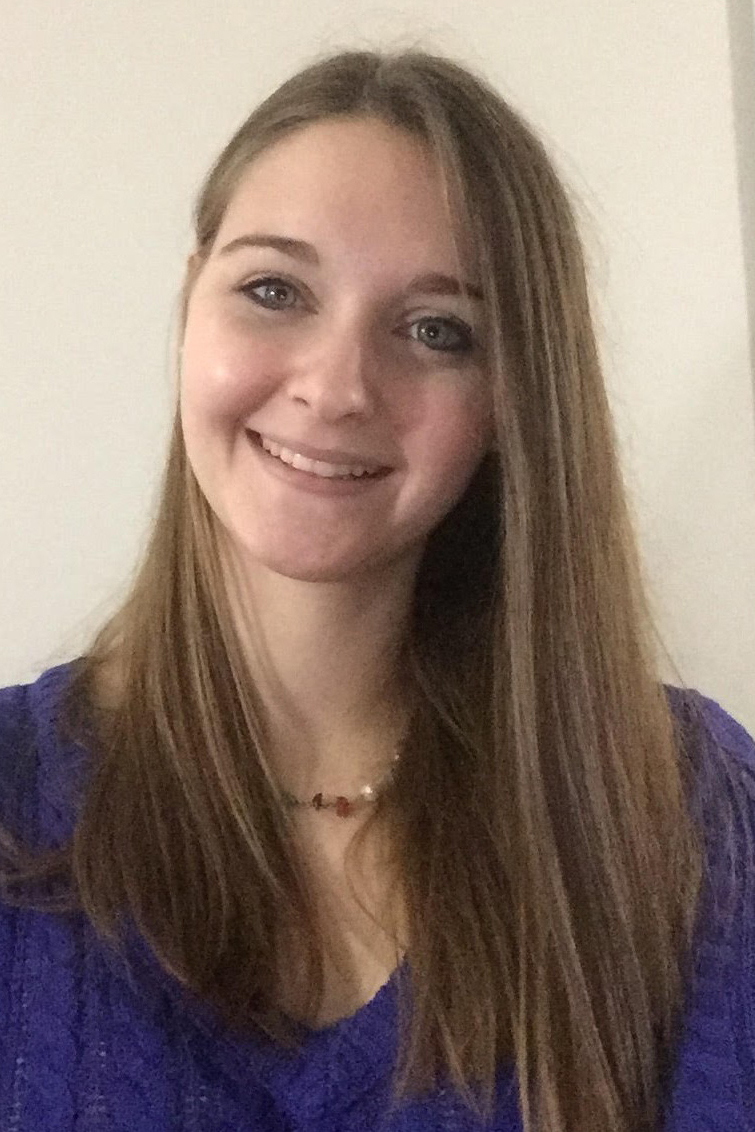
I am currently a structural engineer working in Troy, NY. I design buildings as well as conduct building and structure assessments. I literally use physics everyday. I graduated from SUNY Poly with my BS in civil engineering and a minor in physics in 2017. I then went to University at Buffalo for my masters degree in structural engineering and graduated in 2018.
The physics I learned, mainly the mechanics side of it, helped me comprehend my grad school classes much better, such as dynamics and mechanics of materials. Additionally, my TA position for physics 201 at SUNY Poly greatly helped me get TA positions in grad school which saved me tens of thousands of dollars.
Being a physics TA and tutor greatly sparked my interest in teaching and I have started tutoring high school students in both math and physics as a side job.
Overall being involved in physics as SUNY Poly greatly increased my knowledge and confidence in mechanics which I need to successfully do my job. Being a TA really helped me master mechanics and mathematics and helped me learn how to help others understand and appreciate the subject as well.
Alden Koch
I received my BS in electrical engineering with a minor in physics from SUNY Poly and went on to obtain a MS in biomedical engineering from the university of Michigan. I now work in a materials science lab researching the nanostructure of biomineral systems using electron microscopy.
Looking back, starting a physics minor was probably the first time I really got involved in my education. The decision was sort of spur of the moment, but the mathematical modeling skills and solid foundation in basic physics that I gained has been invaluable in my continuing education. Being able to focus on a specific field early in my education was a rewarding experience and learning to tackle complex problems was not only fun but also a skill I have used a lot in engineering and science. As a TA I worked closely with my professors and learned a lot by teaching others. I think that kind of involvement and the connection I had with my studies ultimately influenced my decision to pursue a graduate degree.
I gained an appreciation for the physical world around me and the elegance of a good mathematical model. Even across different disciplines I am still able to rely on the skills I developed studying physics to tackle new problems.
Alex DiPerna
Graduated in May 2008
Major: Electrical Engineering
Minor: Physics
During my tenure as a student at SUNY Poly I was fortunate enough to earn a minor in physics. The physics coursework I took prepared me for graduate coursework in Electrical Engineering. Courses such as Electromagnetics and Intermediate Mechanics laid the foundation for my future graduate research. As a graduate student I benefited from both the mathematical methods I was exposed to in my SUNY Poly physics courses and from the actual course material presented in the physics courses. I use the mathematical methods in my research and coursework, and I use the ideas presented in the courses as a background for my own projects. I recommend the advanced physics courses at SUNY Poly to anyone interested in physics or interested in graduate/research work in engineering, computer science, or mathematics.

